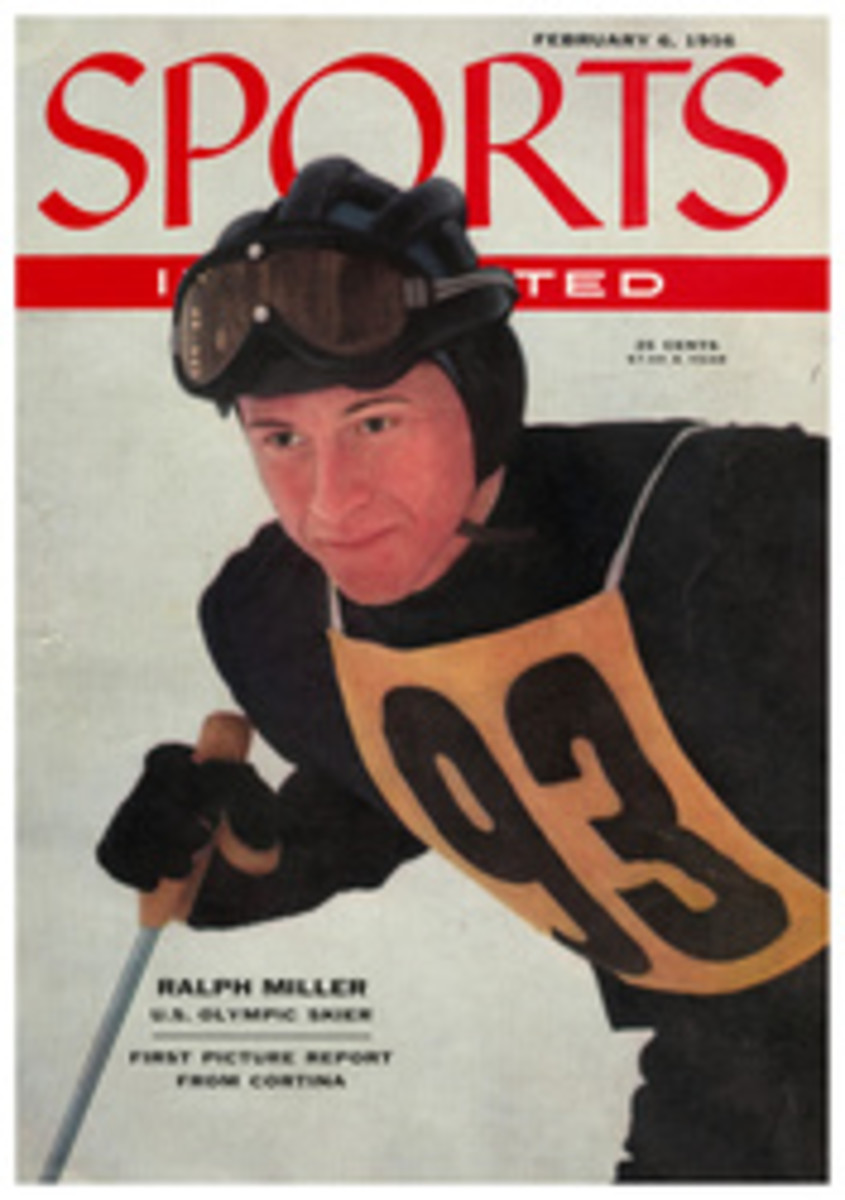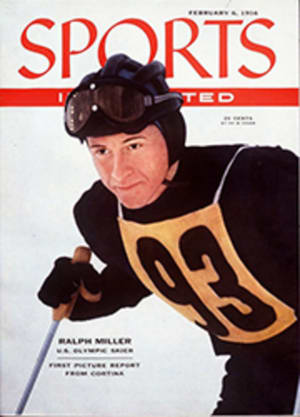
THREE FOR TRACK
The united states has been singularly blessed down through the years with track athletes able to resist the ravages of wear and tear and time; runners and jumpers and weight men who could compete—and win—in one Olympic Games and four years later return to compete—and perhaps win—again. How pleasant it is to consider, for example, such polished old champions as Harrison Dillard, Bob Richards, Mai Whitfield, Andy Stanfield and Parry O'Brien and know that, in Melbourne in November, they will once again be on your side.
But Olympic teams and Olympic hopes are built even more on the exciting talent of great young men and in this, too, the United States has been more than fortunate. The year 1955 produced Arnie Sowell, Charles Jenkins, Bobby Morrow and Don Bragg. Now 1956 promises to be even better; already, with the indoor season just begun and the big outdoor meets still months away, the track world has discovered Phil Reavis, David Sime and Lee Calhoun. The three names are good ones to remember; they may appear again on the passenger list of a ship bound for Melbourne in the fall.
Reavis is a 19-year-old Villanova sophomore from Somerville, Mass. In high school he once cleared 6 feet 6 inches; as a college freshman he did 6 feet 7½. But this, the experts were willing to bet, was as high as he could go; Phil Reavis is only 5 feet 9½ inches tall and 5-foot-9½ jumpers just do not go around threatening world records which, these days, is almost a prerequisite to a berth on the Olympic team. That, however, was some weeks ago. Today the 135-pound Negro has cleaned up at the Massachusetts K. of C., Philadelphia Inquirer and Boston A.A. games by jumping, on successive weekends, heights of 6 feet 9¾ inches, 6 feet 10 and 6 feet 9. The first earned Reavis the meet's outstanding-athlete award; the second set a meet record; the third gained the youngster a tie with the man generally acknowledged No. 1 among the world's current high jumpers, Ernie Shelton of southern California.
The secret of Reavis' success is really no secret at all, but something every good high jumper must have-tremendous leg spring. Reavis has it in phenomenal quantities. "The greatest I've ever seen," says Charles Holding, the former East Texas star. "I saw Reavis jump last year and even then he could get up—which is the most important thing. Now he has learned to get across the bar, too."
Sime has been even more spectacular (SI, Jan. 30). For one thing, while Reavis was known for his schoolboy track feats, Sime hardly touched the sport back home in Fair Lawn, N.J. He was a baseball player with enough right-hand power to attract major league scouts and, having also attracted a scholarship from Duke, headed South to play baseball. But one day Sime was clocked going to first base. The time: 3.5 seconds (Mickey Mantle of the Yankees, hitting from the left side of the plate, was once timed in 3.4). So Sime found himself a member of both the baseball and track squads last spring and once he began to run, no one could catch this redheaded 18-year-old with the smooth, powerful stride. He went undefeated as a freshman and this winter received an invitation to the Washington Evening Star meet.
What happened there was a revelation. Now grown up to 6 feet 2 inches and 185 pounds, Sime beat two famed sprint champions (Andy Stanfield, Olympic 200 meters; Rod Richard, Pan-American 100 and 200) in a series of three dashes at 70, 80 and 100 yards. His time for the 100 was 9.5, the best ever recorded indoors.
Sime still plans to play baseball, but his coaches feel there won't be too much conflict. He'll enter two more eastern meets, the Millrose Games this weekend and the New York A.C. event, also at Madison Square Garden, Feb. 11. After that he will run only in the Atlantic Coast Conference indoor meet Feb. 24 and then start getting ready for the big outdoor races.
In the sense that the others are 1956 discoveries, Calhoun is not—or at least not exactly. This 175-pound North Carolina College hurdler from Gary, Ind. won the Evening Star Games hurdle event as far back as 1953 and was second in the National AAU indoor meet. But then he went into the Army and disappeared from view. Now, back in school, Calhoun has resumed his track career in earnest.
Already he has successfully passed the two big tests facing any hurdler: Harrison Dillard and the clock. Calhoun beat the ageless Olympic champion at 50 yards in a world-record-equalling 6 seconds at Philadelphia; the next night he romped home ahead of a Dillard-less field in 8.3 seconds for the Washington 70-yard race (also tying a world record). Saturday night at Boston he was scheduled to meet Dillard again but had to be content with just winning. This time he ran a tenth of a second off Dillard's meet record as Old Bones watched from the sidelines with an injured leg.
Now, although North Carolina College Coach L. T. Walker has entered the slender 22-year-old speedster in most of the remaining major indoor meets (including Saturday's Millrose Games where Calhoun will again share the spotlight with Reavis and Sime), the big target is the outdoor distance of 120 yards, the American equivalent of the Olympic 110 meters. Calhoun's best time for the event, made in the Army, is 14.3, which is good but not nearly good enough. But last year's times on Calhoun are like last year's shoes on a growing boy—they just don't fit any more. "We're working now to get into the 13s," says Walker, "because I think it's going to take 13.8 or 13.9 to get on that boat."
ILLUSTRATION

